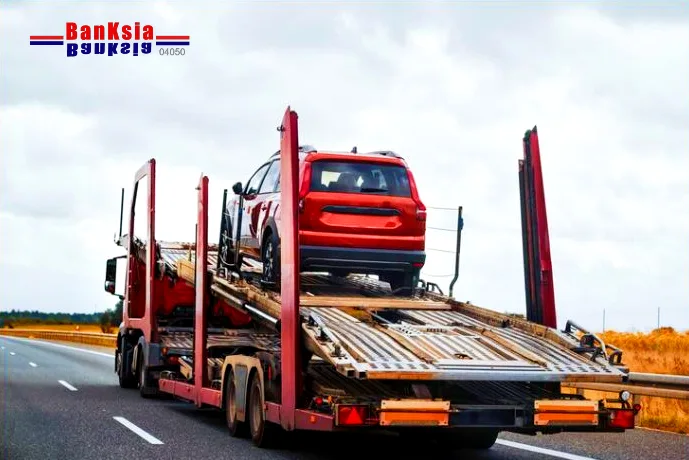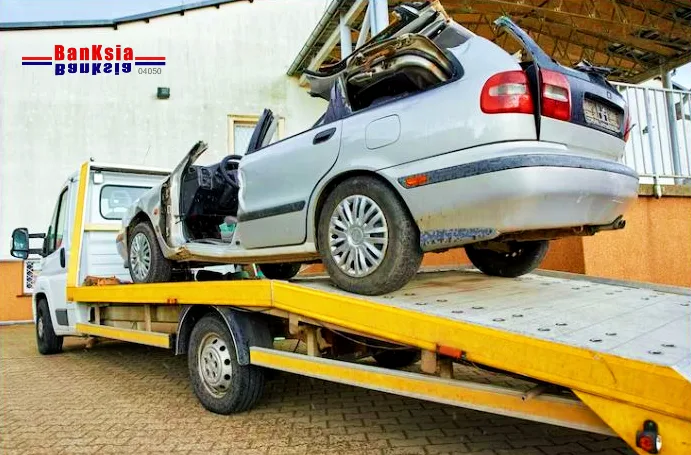Tilt Tray Towing Services From Banksia Towing
Banksia Towing: Your Trusted Towing Partner in Sydney
Banksia Towing is a leading provider of towing services in Sydney, renowned for its exceptional expertise, professionalism, and unwavering commitment to customer satisfaction. We offer a comprehensive range of towing solutions, including tilt tray towing, to cater to the diverse needs of our clientele.
Tilt Tray Towing Services in Sydney
Tilt tray towing is a highly versatile towing method that involves the use of a specialized truck equipped with a hydraulic platform that tilts to load and unload vehicles. This method is ideal for towing vehicles of all shapes and sizes, including:
- Cars
- Trucks
- Vans
- Motorcycles
- Boats
- Machinery
Why Choose Banksia Towing for Your Tilt Tray Towing Services?
As one of the largest and most experienced tilt tray towing providers in Sydney, Banksia Towing has the equipment and expertise to handle any towing job safely and efficiently. Our fleet of heavy-duty tilt tray tow trucks are purpose-built to transport a wide range of vehicles, from passenger cars to large commercial vehicles and machinery. With over 20 years in the towing industry, our professional drivers are highly trained and fully certified to conduct tilt tray tows according to all road safety regulations.
Benefits of Tilt Tray Towing
Tilt tray towing offers numerous advantages over traditional towing methods, including:
- Increased safety: The hydraulic platform provides a stable and secure base for loading and unloading vehicles, minimizing the risk of damage.
- Reduced vehicle wear and tear: The platform lifts vehicles off the ground, preventing damage to tires, suspension, and other components.
- Flexibility: Tilt tray trucks can access tight spaces and navigate uneven terrain, making them suitable for a wide range of towing scenarios.
- Time efficiency: The hydraulic platform allows for quick and efficient loading and unloading, reducing towing time.
Our Fleet of Tow Trucks
Banksia Towing boasts a fleet of state-of-the-art tow trucks, each equipped with the latest technology and safety features. Our trucks are regularly maintained and inspected to ensure optimal performance and reliability.
Our Services
In addition to tilt tray towing, we offer a full range of towing services, including:
- 24/7 emergency towing: We are available 24 hours a day, 7 days a week to respond to your emergency towing needs.
- Car towing: We tow cars of all makes and models, including luxury vehicles.
- Truck towing: We have the capacity to tow heavy-duty trucks and semi-trailers.
Why Choose Banksia Towing?
When you choose Banksia Towing, you can expect:
- Professional and experienced drivers: Our drivers are highly trained and experienced, ensuring the safe and efficient handling of your vehicle.
- Competitive pricing: We offer competitive rates without compromising on quality.
- Exceptional customer service: We are committed to providing our customers with a hassle-free and satisfactory towing experience.
24/7 Emergency Tilt Tray Towing
As the most relied on towing provider in Sydney, Banksia Towing offers 24/7 emergency tilt tray towing services. Whether you break down on a deserted road or have an accident on a busy highway, you can count on us to respond quickly and have your vehicle transported safely to its destination. We understand the
Reliable Transportation for Vehicle Repairs or Relocation
As well as emergency towing, many customers use our tilt tray towing services for planned vehicle transportation. This includes relocating vehicles between sale locations, taking cars to and from repair shops, or transporting machinery for maintenance and servicing. You can trust our professional drivers to deliver your vehicle intact to its destination on time, every time.
Conclusion
In conclusion, Banksia Towing provides the most reliable tilt tray towing services in Sydney. With over 20 years in the industry, a modern fleet, 24/7 availability and competitive pricing, we are the natural choice for all your vehicle transportation requirements. For all your towing needs in Sydney, trust the experts at Banksia Towing. Contact us today to schedule a tow or for a free quote. Our team is standing by to assist you 24/7. Tilt Tray Towing is a valuable service in the world of vehicle transportation.
Also Follow Us On Facebook & Instagram For More Updates.
Frequently Asked Questions (FAQs)
- How do I choose the right tilt tray tow truck?
Select a truck that aligns with your specific needs and budget. Consider factors like towing capacity, durability, and ease of maintenance.
- Is tilt tray towing suitable for all types of vehicles?
Tilt Tray Towing is versatile and can accommodate various vehicle sizes and types, from cars to heavy machinery.
- What should I do if a vehicle is stuck in a tight spot?
In such situations, precision and skill are crucial. Carefully maneuver the tilt tray to extract the vehicle without causing damage.
- How can I prevent damage to the towed vehicle?
Properly secure the vehicle using appropriate tie-down methods and drive cautiously to avoid sudden stops and sharp turns.
- Are there any safety precautions I should take during bad weather?
Yes, exercise extreme caution during adverse weather conditions. Slow down, maintain a safe following distance, and use hazard lights if necessary.


